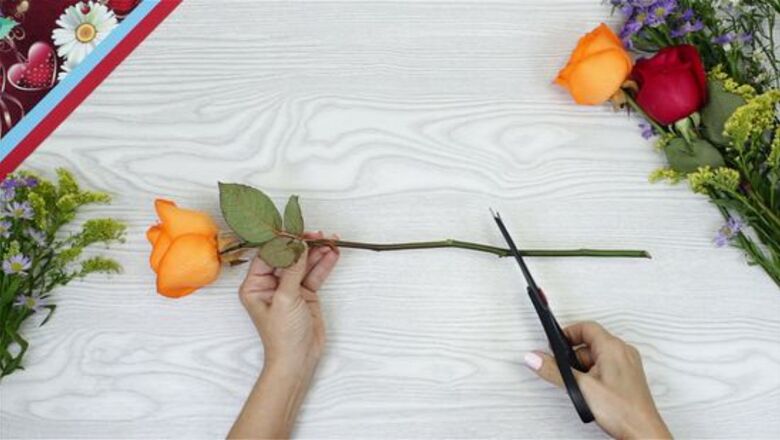
views
Air-Drying Flowers
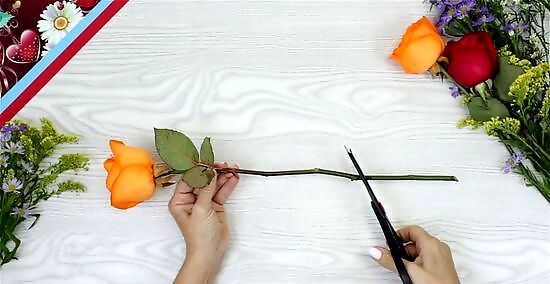
Trim excess material. Get rid of any extra leaves, branches, or other foliage growing from the stem with your fingers or a pair of scissors. If desired, clip the stem to a shorter length if it is longer than six inches, but leave at least a half-foot of length. Place the flower(s) well away from direct sunlight once you do so that they do not lose their color. This method works well for any flower that is partially dry and not prone to wilting. It also works particularly well for bouquets.
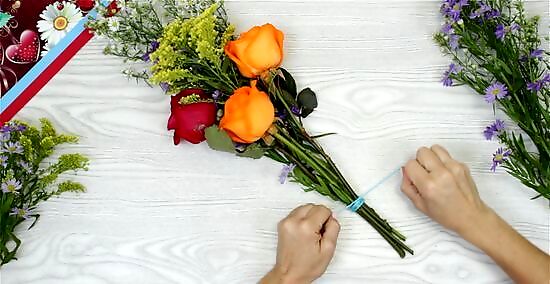
Tie your flowers. If you are bunching several flowers together into one bouquet, use a zip-tie, rubber band, string, or twine to tie the stems together. Be careful not to bunch too many flowers into one bouquet, since this may crush some or all of them. Tie your knot at the base of the stems so the flowers aren’t crowded together at the top. The bigger the flower’s head, the better it is to dry them individually.

Hang them up. Tie one end of a length of string, twine, or even dental floss to the base of the stem(s). Tie the other end to a hanger. With your flowers hanging upside-down, place the hangers in a room with little or no sunlight or moisture. Make sure that their placement receives plenty of air circulation to reduce the chance of mold or mildew growing on your flowers. Individual flowers be hung or laid on top of a drying rack or window-screen. In lieu of a hanger, you can also knot the string to form a loop to hang your flowers from a door or cabinet knob.
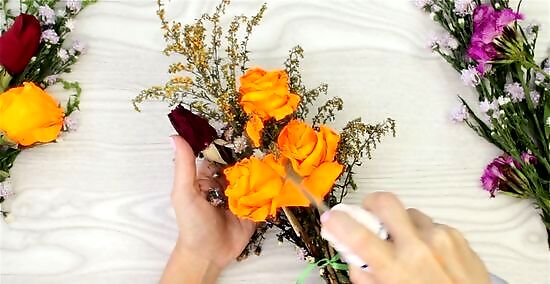
Wait for them to dry. Give your flowers anywhere from one to three weeks to dry thoroughly. Expect thicker stems and flowers to need the most time. Check the petals and the base of the stem for signs of moisture. Once they are dry, cut the string or twine from the hanger and mist them with unscented hairspray to preserve their shape.
Microwaving Your Flowers
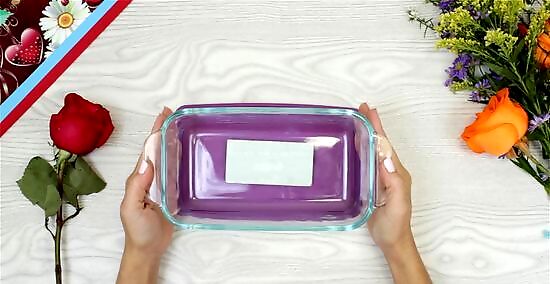
Designate a container for this purpose. Either purchase a covered, microwave-safe container exclusively for this specific purpose, or use one that you do not plan on using for food ever again. Make sure that it is large enough to hold your flower(s). Trim your stems if necessary so that they fit in the container. This method is better suited for drying flowers individually. It also preserves color and shape very well, so if you would like to keep your rose, tulip, or chrysanthemum looking more or less as is, this method is perfect.
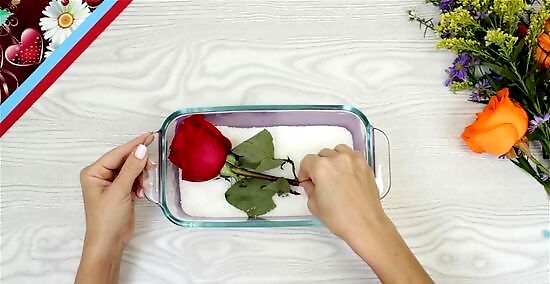
Preserve the flower’s form. Coat the bottom of the container with silica beads. Pour enough beads to create a bed that is an inch or two thick. For larger flower heads, pour more silica beads as needed. Set the flower in the beads with the blossoms facing up. Don’t use too many silica beads at once, since this may damage the petals.
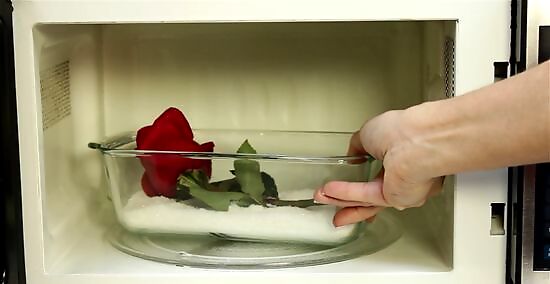
Nuke your flower. Leaving the container uncovered, set your flower in the microwave. Run your microwave for two to five minutes at a low heat level. Open the door and check how moist the flower is. Continue to cook the flower at short intervals and inspect the flower in between until it has dried. The type of microwave and the type of flower will affect how long this will take. For each new type of flower you attempt to dry in the microwave, set aside one as a crash-test dummy to experiment with time and heat levels before nuking the rest. If you are nervous about over-drying your flower at first, set a small bowl or cup of water in the microwave while cooking the flower to slow down the rate of drying.

Let your flower rest overnight. Once the microwave has dried your flower, seal the container with its cover. Set the container in an out-of-the way place. Lightly vent the container and leave it alone for another 24 hours.
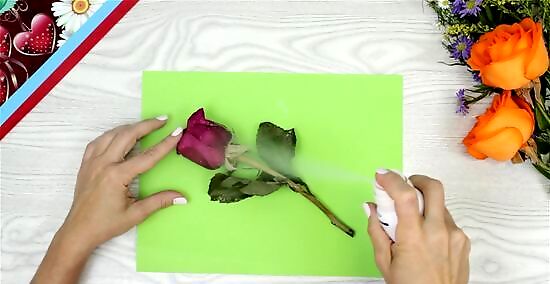
Clean your flowers. After the flower has sat overnight in the silica gel, remove the flower from the container. Use a fine brush to wipe the gel off. Once the gel has been removed, spray the flower with an acrylic spray.
Using Sand or Another Drying Agent
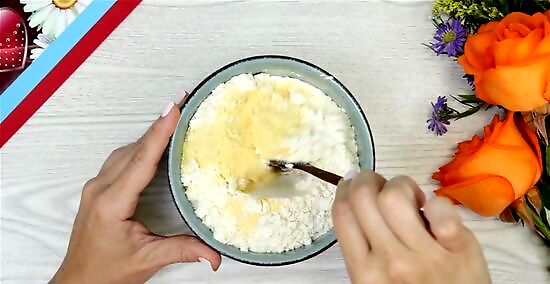
Choose a drying agent. Go the cheapest route and use fine, dry sand that has been washed and sifted to remove salt, soil, and other coarse material. Or speed up sand’s slow-acting properties by mixing it with borax. Or make the drying process that much faster by eliminating the sand and using a borax/cornmeal mixture. Sand/borax mixture: 1 part sand to 2 parts borax, with 1 tablespoon of salt added to every quart. Borax/cornmeal mixture: 1 part borax to 1 part cornmeal for fastest results, or 1 part borax to 3 parts cornmeal to reduce the risk of the borax burning your petals.
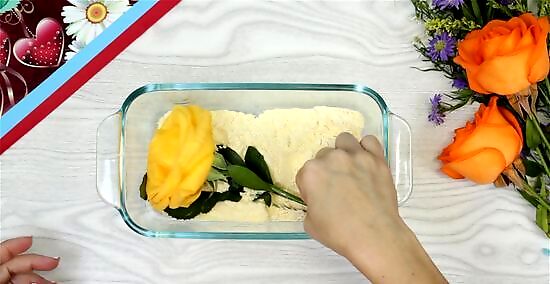
Place your flower in the drying agent. Pick a container that is large enough to fit your flower. Fill the bottom with the drying agent so that it is a half-inch to an inch deep. Set the flower on top of the mixture with the blossoms facing up. If you are drying more than one, allow plenty of room in between each flower so they do not touch.
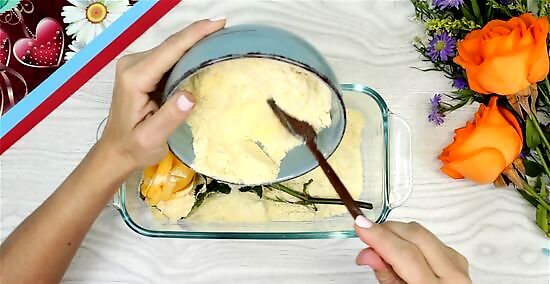
Preserve their shape. Spread the drying agent in the container over the stem and flowers. Grab a handful and very gently pour it over the petals so some of it ends up between them, reducing the risk of them being crushed when you cover them momentarily. Be careful not to pour too much at once, which may damage the petals.
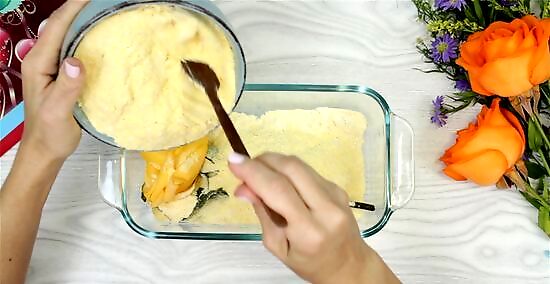
Bury the flower. Add another half-inch to an inch of drying agent to the container. Be careful not to pour the drying agent directly on top of the flower, since the weight might crush it. Spread the drying agent until the flower is completely covered. If you are drying multiple flowers at once, and if your container is deep enough, you can repeat the whole process and lay more flowers on top of this layer.
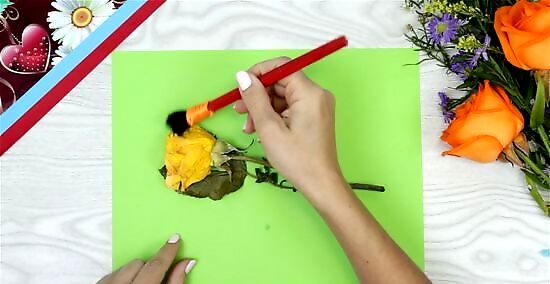
Wait for the flower to dry. Seal the container once you have buried the flower. Depending on how thick your flower it is, allow anywhere from four days to two weeks for it to dry. Unseal the container every four or five days. Use a fine paint brush to wipe away the drying agent and uncover the flower. Feel the petals and the base of the stems for signs of moisture. Rebury the flower and reseal the container if you find any. If you don’t feel any moisture, remove the flower by its stem and gently shake the remaining sand or borax from its petals, using your brush as needed if some crystals are too stubborn to shake loose. If the weight of the drying agent has crushed your petals, use steam to refresh and reshape them.
Pressing Flowers

Choose a large, thick book. Pick one that is long and wide enough to cover your flower’s head. The more pages it has (and thus weight), the better. However, if all you have are fairly slim books, don’t worry. Just pull several off the shelf, or find a heavy object that can rest on top of the book without sliding off. This method works best for delicate flowers that may lose their petals using other methods.
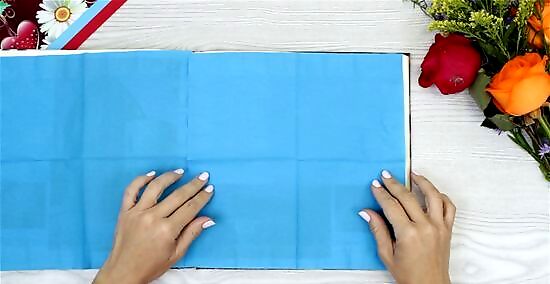
Create a folder for your flower. Use a sheet or two of paper towels or some other material that absorbs moisture. Fold it in half. Make sure that each half will cover the flower’s head. This step isn’t strictly necessary, but it will protect your book from moisture damage and staining, as well as reduce the risk of ink bleeding off the page and staining your flower.
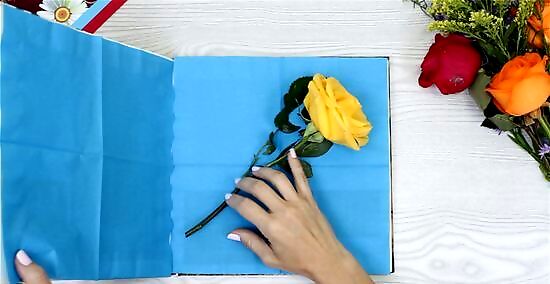
Place your flower inside. First, set your flower on one half of the folder that you have made. Fold the other half over so that it lightly covers your flower. Open your book at least halfway through, preferably closer to the end. Place your folder on the open page and close the book over it.
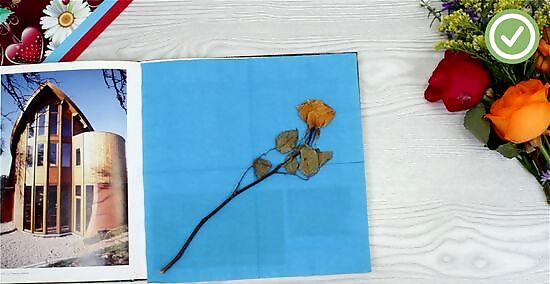
Stack and wait. Set additional books or heavy objects on top of the book with the flower for extra weight. Give your flower roughly a month to dry and press. After that, crack your book open, and you should have a beautifully pressed flower inside!
















Comments
0 comment